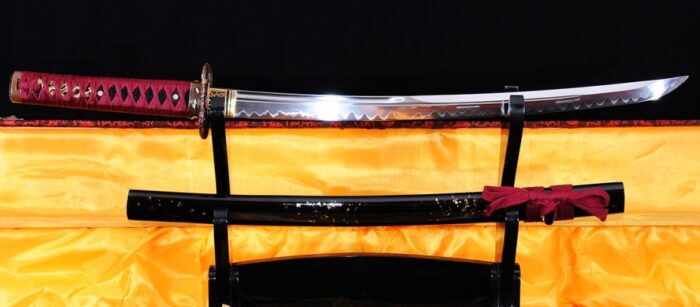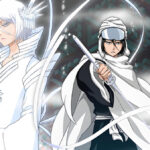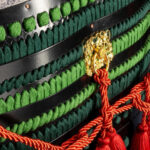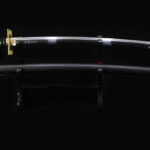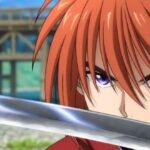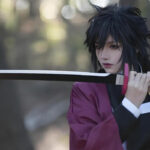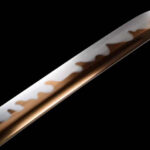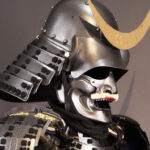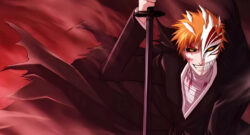Wakizashi: Iconic Japanese Short Sword and How It Differs from Katana
The Wakizashi (脇差) is a traditional Japanese short sword, typically measuring between 30 and 60 cm. It sits between the long Katana and the smaller Tanto, serving as a versatile secondary blade for the samurai. Known for its practicality in close-quarters combat and daily life, the Wakizashi was ideal for use in tight indoor spaces and personal defense.
While more compact than the Katana, the Wakizashi maintains the same sharpness and structural integrity. Together, the two swords formed the iconic Daishō (大小)—the “great and small” pair—symbolizing the honor, status, and spirit of the samurai class in feudal Japan.
Traditional Swordsmithing: 1095 Carbon Steel and the Tosa Clay Tempering Method
This hand-forged Japanese Wakizashi is crafted from premium 1095 carbon steel and undergoes a traditional clay tempering process known as the Tosa method, a heritage technique originating in the Tosa region of Japan.
The clay tempering technique involves coating the blade with a specially formulated clay mixture in varying thicknesses to control the cooling rate during quenching:
The edge is coated with a thin layer, cooling quickly to form a hard, sharp martensitic structure.
The spine receives a thicker clay layer, cooling more slowly to retain toughness and flexibility through austenite and pearlite structures.
This differential heat treatment results in a blade that is razor-sharp at the edge while remaining resilient along the spine—perfect for both practical use and martial arts training. An added aesthetic bonus is the formation of a Hamon, the signature wavy line along the blade that marks the transition between hardened and softer steel. Each Hamon is a unique signature of the swordsmith’s artistry and skill.
The high carbon content of 1095 steel (approximately 0.95%) provides exceptional hardness and edge retention. When combined with traditional folding techniques, the blade exhibits both outstanding performance and beautiful folded steel grain patterns, making it a true balance of form and function.
Copper Dragon Tsuba: Where Utility Meets Symbolism
This Wakizashi features a striking copper Tsuba (hand guard) in the shape of a dragon, enhancing both the weapon’s visual appeal and practical performance. The Tsuba serves a protective function by preventing the wielder’s hand from slipping onto the blade, while also contributing to the overall balance of the sword.
In Japanese mythology, dragons represent strength, wisdom, protection, and fortune. A dragon-shaped Tsuba is not just decorative—it symbolizes the spiritual and cultural essence of the samurai. Each Tsuba is hand-carved, with meticulous detail down to the scales and whiskers, making every piece a miniature sculpture.
Copper is chosen not only for its beauty but also for its durability and resistance to corrosion. Over time, it develops a natural patina, giving the sword a distinctive antique character and enhancing its collectible value.
Cultural Legacy: The Historical and Symbolic Role of the Wakizashi
The Wakizashi rose to prominence during the Sengoku period (late 15th to early 17th century) and became an essential part of the samurai’s everyday life. Its compact size made it perfect for indoor defense, sudden engagements, and as a backup weapon when the primary Katana was unavailable.
Beyond combat, the Wakizashi held great ceremonial importance. It was traditionally used in the Seppuku (切腹) ritual—a form of ritual suicide undertaken to preserve one’s honor. This profound role embedded the Wakizashi deeply into the spiritual and ethical fabric of samurai life, embodying loyalty, honor, and courage.
In daily samurai routines, it served practical purposes from self-defense and formal ceremonies to mundane tasks like cutting bamboo or preparing food. This versatility made it an indispensable tool and symbol of the warrior’s identity.
Today, the Wakizashi continues to captivate collectors, historians, martial artists, and fans of Japanese culture. Whether admired for its aesthetics, martial potential, or cultural value, it remains a powerful emblem of the samurai sword tradition.
Who Is This Wakizashi For? Recommended Buyers and Uses
Samurai Culture Enthusiasts
This sword is a faithful representation of traditional Japanese design and ideal for anyone studying or appreciating samurai history and samurai weapons.
Sword Collectors
Crafted from 1095 carbon steel and featuring unique clay tempering and a detailed copper dragon Tsuba, this Wakizashi is both a functional weapon and a work of art—highly desirable for display and investment.
Martial Arts Practitioners
For those practicing Iaido, Kendo, or Kenjutsu, this Wakizashi’s combination of edge hardness and spine toughness makes it suitable for drawing techniques and cutting practice, especially in confined training spaces.
Anime and Cosplay Fans
Its impressive visual design and authenticity make it perfect for cosplay, samurai-themed performances, and anime character roleplay, delivering realism and presence on stage or at conventions.
Gift Seekers and Souvenir Collectors
This sword is ideal for marking special occasions. With its artistic craftsmanship and symbolic depth, it makes a memorable gift or keepsake.
Historians and Researchers
Scholars interested in Japanese history and samurai society will find owning and studying an authentic Wakizashi a valuable way to connect with Japan’s feudal past.
Custom Sword Enthusiasts
We offer a wide range of custom swords for sale. You can personalize the Tsuba, blade pattern, handle wrapping, and scabbard color to create a sword that reflects your taste and identity.
How to Care for Your Wakizashi
To preserve the blade’s condition and longevity, follow these maintenance steps:
Apply anti-rust oil regularly to prevent oxidation.
Keep the scabbard and handle dry—avoid exposure to humidity.
Clean the blade thoroughly after use.
Store in a dedicated sword stand or case to prevent scratches.
Avoid improper usage or blade collisions to maintain the edge.
Buying Guide and Price Considerations
This Wakizashi offers the quality and craftsmanship of a true hand-forged samurai sword while remaining reasonably priced. Compared to mass-produced replicas, it provides superior steel quality, functional performance, and collectible value.
Prices for Wakizashi swords can vary widely depending on factors like steel type, heat treatment method, and Tsuba complexity. To make a wise purchase, always consider materials, authenticity, and craftsmanship.
Custom Swords Available — Craft Your Unique Blade
Looking for exclusive custom swords? Our shop offers a variety of hand-forged Japanese swords, including Wakizashi, Katana, and Tanto, all available for customization.
Whether you’re drawn to special Hamon patterns, dragon-themed Tsubas, or unique color schemes for your handle and scabbard, our artisans are ready to help you build a sword that combines beauty, strength, and cultural soul.
Browse our collection to find the perfect blade and add something truly personal to your sword collection.
Conclusion
This Hand-Forged Japanese Wakizashi made from 1095 carbon steel, finished with Tosa-style clay tempering, and decorated with a copper dragon Tsuba, is a true testament to traditional Japanese craftsmanship. Whether you’re a history enthusiast, martial artist, collector, or cosplay fan, this sword embodies the soul of the samurai with beauty, precision, and cultural depth.
Hand Forged Japanese Wakizashi Sword 1095 Carbon Steel Clay Tempered Copper Dragon Tsuba
Hand Forged Japanese Wakizashi Sword 1095 Carbon Steel Clay Tempered Copper Dragon Tsuba
